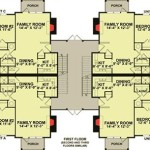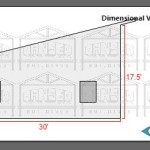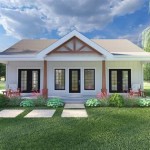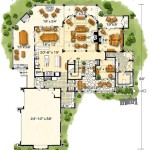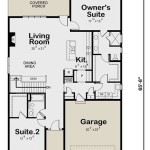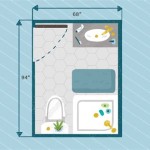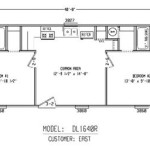Floor Plans For A House With Basement
When planning to build a house with a basement, careful consideration of the floor plan is crucial to maximize space, functionality, and overall home enjoyment. A well-designed basement floor plan can transform your home into a comfortable and inviting living space, adding value and expanding your family's living area.
Basement Floor Plan Considerations:
Before delving into specific floor plan options, several factors should be taken into account:
- Purpose and Usage: Determine the primary purpose of your basement, whether it's for entertainment, storage, recreation, or a combination of these functions.
- Natural Light: Maximize natural light by positioning windows and doors strategically. This will create a brighter, more inviting space.
- Ceiling Height: Ensure adequate ceiling height to avoid a cramped or oppressive feeling. Standard basement ceiling heights range from 8 to 9 feet.
- Egress: Provide at least one safe and accessible egress point in case of emergencies.
- Structural Support: Consider the structural requirements of your basement, such as support beams and columns, and incorporate them into the floor plan.
Popular Basement Floor Plan Layouts:
Various floor plan layouts cater to different needs and preferences. Here are some prevalent options:
- Open Floor Plan: This layout creates a spacious and cohesive area by minimizing walls and partitions. It's ideal for entertainment, recreation, or a combination of uses.
- Partitioned Floor Plan: This layout divides the basement into separate rooms or zones, such as a family room, home office, and storage area. It offers privacy and designated spaces.
- Multi-Level Floor Plan: For basements with varying ceiling heights, a multi-level floor plan can create distinct living areas. This approach allows for creative and functional utilization of space.
Basement Room Ideas:
With a well-planned floor plan, you can incorporate various rooms and amenities into your basement. Here are some ideas to consider:
- Family Room: Create a cozy family gathering space with comfortable seating, a television, and ample natural light.
- Home Theater: Design a dedicated home theater with a large screen, surround sound system, and comfortable seating for an immersive movie-watching experience.
- Home Office: Convert a portion of your basement into a productive home office with a desk, storage, and ergonomic seating.
- Guest Suite: Add a guest suite with a bedroom, bathroom, and small sitting area to provide comfortable accommodations for visitors.
- Storage Area: Utilize the basement for storage by incorporating shelves, closets, and organizers to keep your belongings neat and accessible.
- Laundry Room: Move your laundry facilities to the basement for convenience and noise reduction.
- Hobby Room: Dedicate a space to your hobbies, such as crafting, woodworking, or music.
Conclusion:
Designing a floor plan for a house with a basement requires careful planning and consideration. By understanding your needs, maximizing natural light, and choosing a suitable layout, you can create a functional and enjoyable living space. Whether you opt for an open floor plan, a partitioned layout, or a multi-level design, a well-executed basement floor plan can enhance your home's value and provide years of comfortable and convenient living.

Simple House Floor Plans 3 Bedroom 1 Story With Basement Home Design 1661 Sf Basementdesignflo One New

House Plans With Basements Dfd Blog

Photos Of Plan 1117 The Clarkson Basement Floor Plans House

Stylish And Smart 2 Story House Plans With Basements Houseplans Blog Com

Extend Your Homes Living Space With A Basement Floor Plan

Basement House Plans Next Level Homes

Home Designs Basement Floor Plans Finishing

Designs For A House Basement And Ground Floor Plans Riba Pix

Basement Open Floor Plan Idea

Versatile Spacious House Plans With Basements Houseplans Blog Com

